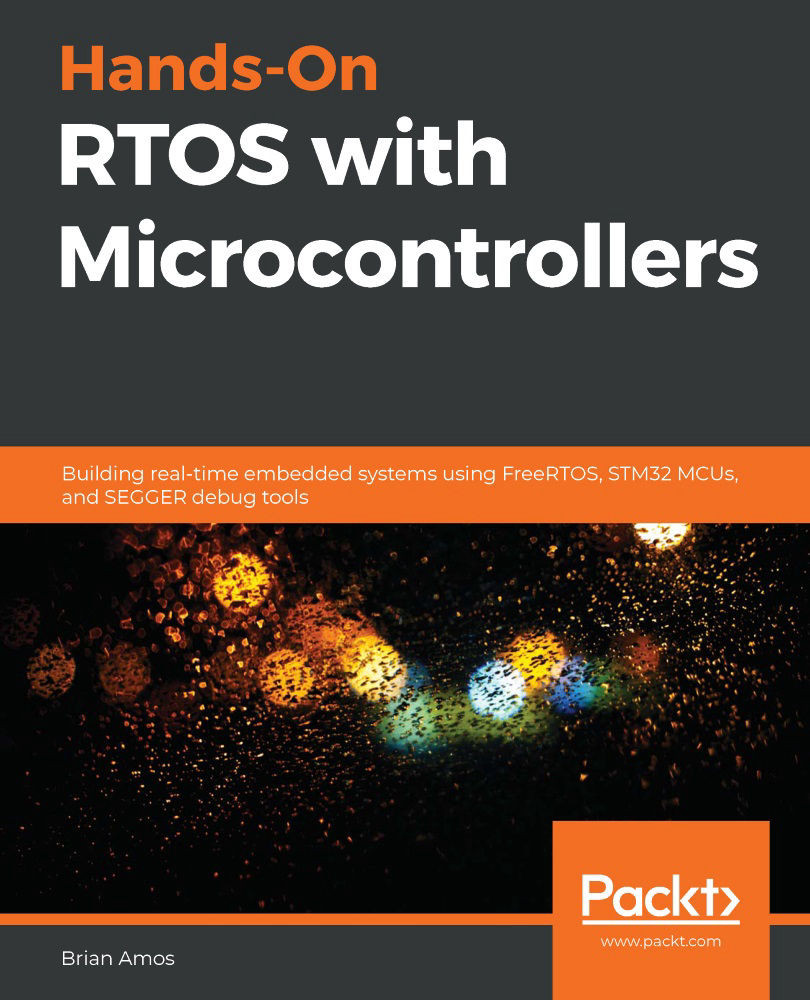To complete the hands-on exercises in this chapter, you will require the following:
- Nucleo F767 development board
- Micro USB cable
- ST/Atollic STM32CubeIDE and its source code (the instructions for this can be found in Chapter 5, Selecting an IDE – Setting Up Our IDE)
- SEGGER JLink, Ozone, and SystemView (Chapter 6, Debugging Tools for Real-Time Systems)
The easiest way to build the examples in this chapter is to build all Eclipse configurations at once, and then load and view them using Ozone. To do this, follow these steps:
- In STM32CubeIDE, right-click on the project.
- Select Build.
- Select Build All. All the examples will be built into their own named subdirectory (this may take a while).
- In Ozone, you can now quickly load each <exampleName>.elf file. See Chapter 6, Debugging Tools for Real-Time Systems, for instructions on how to do this...

































































